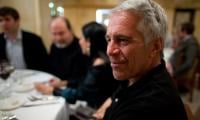KARACHI: The private sector credit contracted for more than six months in the current fiscal year as high borrowing costs and a sluggish economy dampened demand for loans, central bank data showed on Tuesday.
The private sector repaid Rs15.313 billion to banks between July 1, 2023 and Jan. 19, 2024, compared with borrowing Rs393.2 billion in the same period a year earlier, the State Bank of Pakistan (SBP) data showed.
The decline reflects the impact of aggressive interest rate hikes by the central bank, which raised its benchmark rate by 15 percentage points to a record 22 percent since September 2021 to curb runaway inflation. The policy rate has remained unchanged at 22 percent since June 2023.
The six-month Karachi interbank offered rate, the main lending rate, peaked at over 24 percent in September 2023, making borrowing more expensive for businesses.
Private businesses struggled to get financing due to high interest rates and weak economic activity. Banks also avoided lending to riskier borrowers as they feared defaults and bad loans.
High public sector borrowing restricted the amount of bank funding that the private sector could access. Pakistani banks were unable to utilise their massive liquidity since they had the opportunity to invest in risk-free government securities. Banks blamed a drop in lending on borrowers' poor appetite driven by faltering economic activity.
The government borrowed Rs4 trillion from banks during July-January FY24 to fund its budget deficit, compared with Rs1.4 trillion a year earlier.
The IMF said in its country report, which was released a week ago, that banks' sovereign exposure increased from 48 percent of assets at the end of FY21 to 55.3 percent at the end of September 2023, with private sector credit decreasing.
Economic growth fell sharply from 6 percent in FY22 to 0.3 percent in FY23, which was indicative of the private sector's declining confidence in the economy.
In its monetary policy statement, the SBP, which maintained its main interest rate at 22 percent for the fifth consecutive meeting on Monday, stated that in the industrial sector, large-scale manufacturing had seen a slight decline in the first five months of FY24, with a moderate increase noted in November.
The broad money (M2) growth, which had been hovering around 14 percent in FY24, surged to 17.8 percent year-on-year as of the end of December 2023, according to the SBP.
The Monetary Policy Committee of the central bank assessed that this acceleration was just transitory and was anticipated to reverse in the coming months. M2 decreased by 0.8 percent on a week-on-week basis to Rs31.9 trillion as of January 19, according to the latest figures. The drop in bank deposits (0.8 percent) and the decline in currency in circulation (0.6 percent) were the main drivers of this.
“The improvement in the external position had increased the net foreign assets of the banking system. In contrast, growth in net domestic assets of the banking system decelerated, primarily due to a slowdown in private sector credit (PSC),” the SBP said.
“This was primarily explained by relatively low fixed investment loans and a net retirement in consumer loans. However, the demand for working capital loans remained close to last year,” it added.
“The Committee also noted the continued declining trend in currency to deposit ratio, which was due to the strong growth in bank deposits and a decline in currency in circulation.”
According to analysts, the economic recovery and the impending monetary easing, which were expected to begin in March, could accelerate the expansion of private-sector credit.
The government expected Pakistan’s economy to rebound in the fiscal year 2024, growing by 2-2.5 percent due to the better performance of the agriculture sector.
The growth projections from the SBP did not change. As previously stated, the country's GDP was expected to grow in the range of 2-3 percent led by improvement in agricultural growth. Along with that, survey results show a consistent increase in capacity utilisation in the manufacturing sector, which is an encouraging sign for the economy.















